CASE STUDY
How Nissin Met Rapidly Increasing Orders with e-Stage for Metal
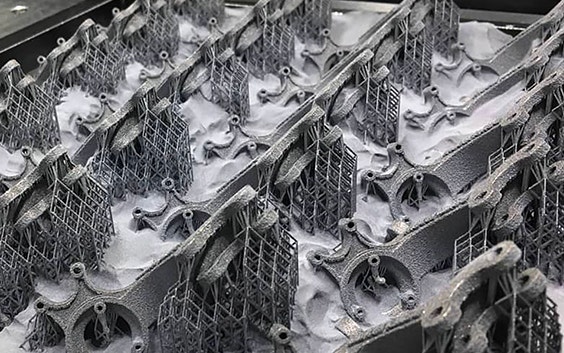
Nissin Manufacturing Co., LTD. is a Japanese manufacturer that 3D prints prototypes as well as end-use metal parts and machine tools for use in automobiles. In order to master their use of metal 3D printers and meet the growing demands of their customers, Nissin turned to Materialise for local support and 3D printing software solutions.
Extensive support enables extended services
When Nissin first brought metal 3D printers into their services in March 2016, there were some initial struggles that the team had to overcome.
“We attended a training course in Europe with the manufacturer of our 3D printers, but we couldn’t grasp the details. When we returned to Japan and began printing prototypes, we encountered problems that we couldn’t get sufficient assistance to resolve. Language barriers and the time difference between the machine manufacturers and ourselves were proving to be a major issue,” says Mr. Yanzhuo Zhang, Application Engineer at Nissin Manufacturing.


Upon introducing metal 3D printing to the organization in 2016, they also brought in Materialise Magics for their data and build preparation. So, once it was clear that arising issues couldn’t be solved by working with the machine manufacturer, they turned to Magics and local support from the Materialise team to improve their metal 3D printing workflows and find solutions to their problems.
“All of our metal 3D printing problems that were not solved with assistance from the machine manufacturer were quickly resolved with support from Materialise,” explains Mr. Zhang. “We received training and support on Materialise Magics after we installed the 3D printer at our headquarters in Kyoto, Japan. The Materialise support team responded that same day or the next business day to help answer any questions we had, so I am very happy with the speed of response.”
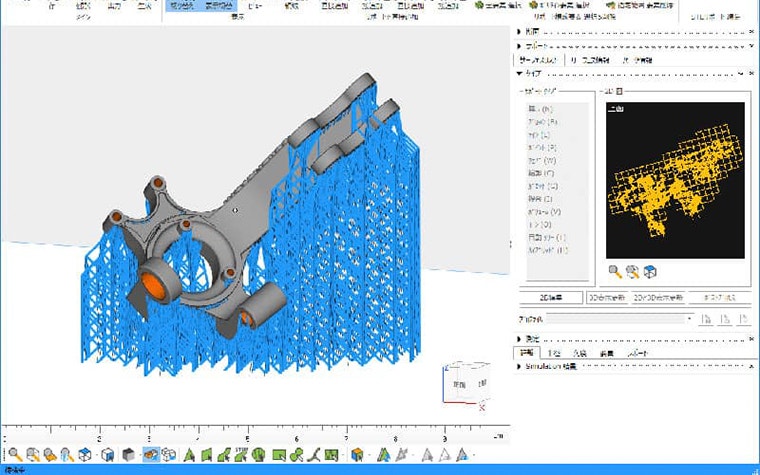

At Materialise, we provide local support with locations and 3D printing experts throughout the world. In this case, our Japanese support team’s expertise in handling 3D printers and AM builds enabled them to assist the engineers at Nissin. The team draws from this know-how to respond to customer inquiries quickly and carefully.
Magics is the industry standard in data and build preparation software that combines ease of use with extensive functionality. Nissin finds these capabilities especially useful.
“Magics works seamlessly with many kinds of 3D printers and the interface is intuitive and easy to understand, so we’ve been using it continuously since bringing it into our production,” says Mr. Zhang.
e-Stage for Metal reduces work hours by 87.5%
As Nissin’s metal prototyping and part production went into full swing, orders began to surge around 2019. The number of requests for short delivery times increased, and Nissin needed to find solutions for increasing productivity.
A particular challenge the team faced was the mounting and post-processing of support structures: “We had to spend many hours considering which surface to install the supports on when preparing parts with complex shapes. There was also an unnecessarily large amount of metal powder left on the support materials after printing ― which wasted resources ― and removal of the supports took a long time,” shares Mr. Zhang.
When speaking with the Materialise team about these challenges, our experts encouraged Nissin to consider switching to e-Stage for Metal for automatic support generation. After validating this software solution’s usefulness in their situation, Nissin made the switch with the help of Materialise in setting the correct parameters.
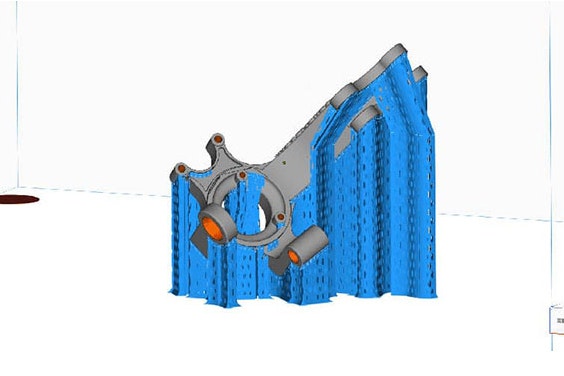
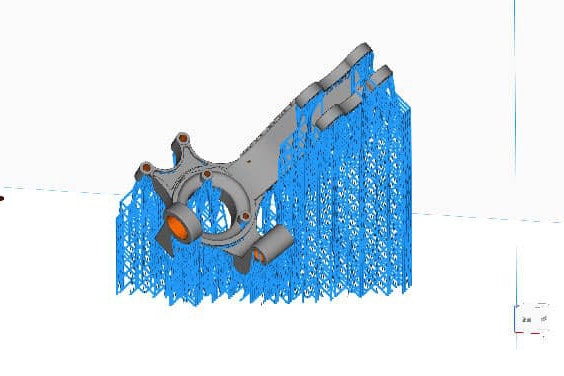
As opposed to the traditional manual support design (left), e-Stage generates supports automatically (right).
The results were immediate; data creation was dramatically faster. The support configuration process, which used to take a little over a day, was reduced to just one hour — a time reduction of 87.5%.
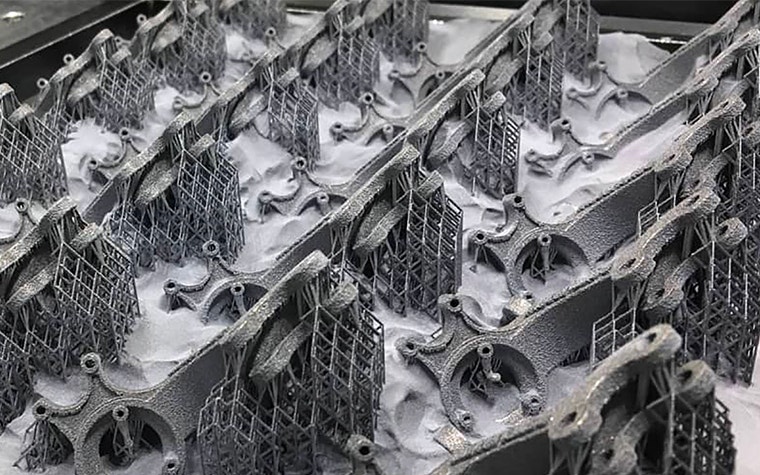

There were also significant improvements in terms of reducing the amount of post-process work. The amount of metal powder remaining after printing was greatly reduced thanks to the large gaps created with this lattice structure; the powder could be removed just by blowing on the part. And the work hours spent on post-processing, including the removal of supports, were cut in half. These enhanced support structures use needle-thin contact points. Removing support became much easier, the burden on the operator was reduced, and human error was minimized.
“The amount of metal powder remaining on the printed object was greatly reduced due to the grid-like support structure containing large gaps. Because of this, the work hours required for post-processing steps, including support removal, were halved. The powder can be removed just by blowing, and the support is very easy to remove, which reduces the burden on the operator and greatly minimizes human error.”
— Masato Yamazoe, Nissin Manufacturing Co., Ltd.
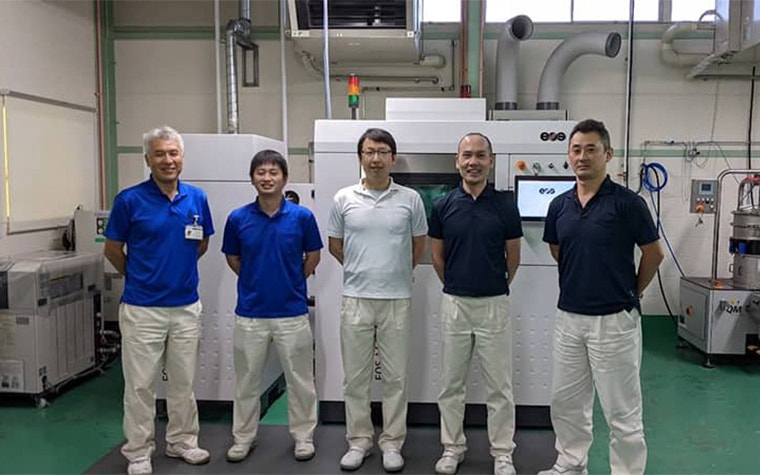

What does this mean for the future of Nissin?
“Compared to the European market, the size of the Japanese market for metal 3D printers is small. But I have the impression that domestic recognition of 3D printers has rapidly increased within the last few years,” says Mr. Koji Tanaka, Manager at Nissin Manufacturing. “We have seen a sharp increase in the number of inquiries for 3D-printed metal prototypes over the past year.
“Although there are still many challenges to overcome before 3D-printed parts can be used in mass production, we have high hopes for the progress of both AM hardware and software. Our mission is to use better products to provide better products.”
Share on:
This case study in a few words
Metal 3D printing service bureau
Materialise Magics
Materialise e-Stage for Metal
Prototyping as well as end-use metal parts and machine tools for use in automobiles
Nissin needed to reduce manual labor and increase productivity in order to meet growing customer demands
3D printing software solutions to automate processes, and local knowledgable technical support
How we helped
Improve production efficiency, automate repetitive tasks, and optimize print success rates with industry-leading data and build preparation software.
Optimize and automate support generation with options tailored to different materials, technologies, and geometries.
